Profile / Characteristics
| English translation | Latin declination and pronunciations | Size/ °² | # stars (visible) |
| the Sea Monster | Cetus – SEE-tus Ceti – SEE-tie | 1231 | 190 |
Main Star (brightest one):
| Designation | HIP number | name in IAU-CSN | brightness |
| α Cet | HIP 14135 | Menkar | 2.53 mag (V) |
Our (modern) Explanation
Cetus is Latin for a creature from Greek mythology called Ketos, a sea monster who lived in the Mediterranean Sea. It was send to threaten Andromeda, but slaughtered by Perseus.
Ancient Globes
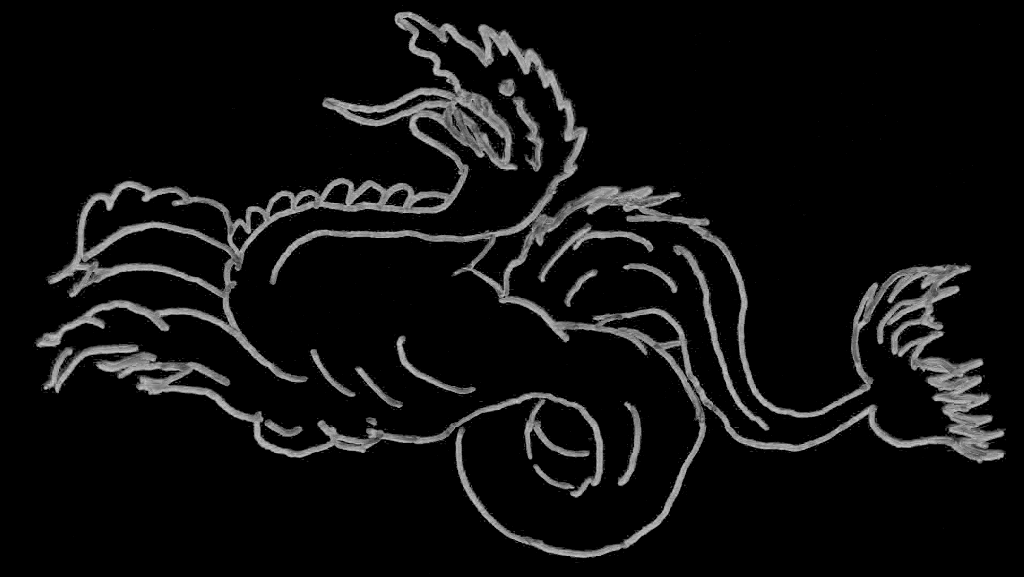
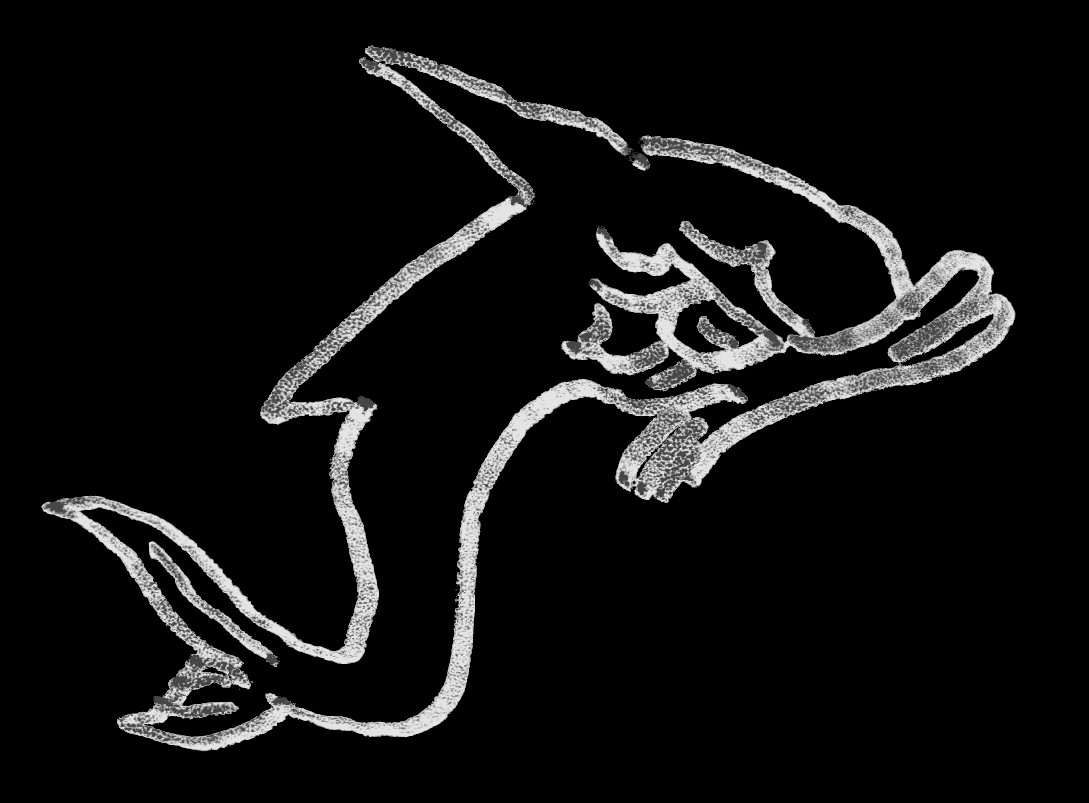
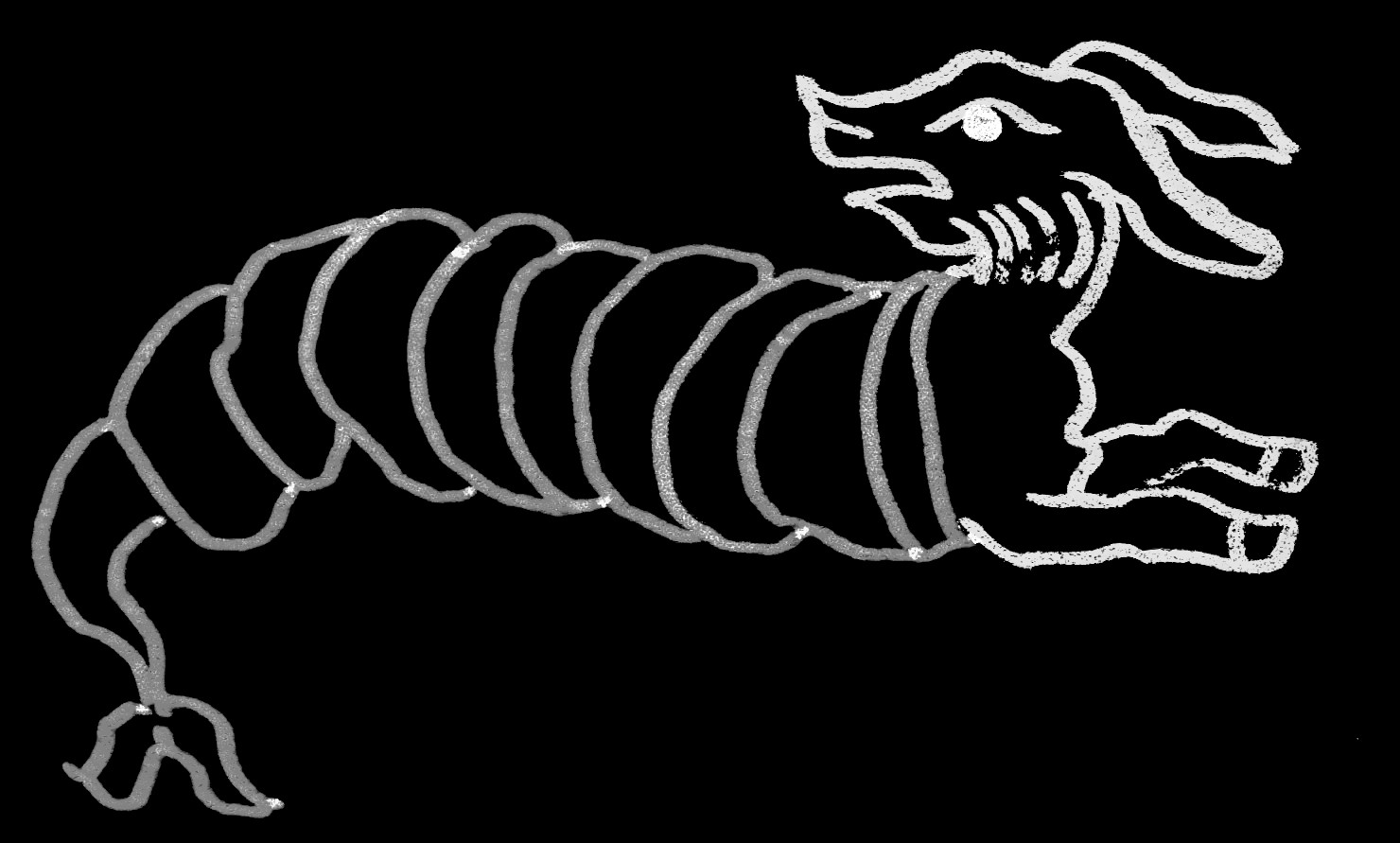
Farnese Globe
Kugel Globe
Mainz Globe
Ancient Lore & Meaning
Aratus
[352] Andromeda, though she cowers a good way off, is pressed by the rush of the mighty Monster of the Sea [Cetus]. For her path lies under the blast of Thracian Boreas, but the South wind drives against her, beneath the Ram and the Pair of Fishes, the hateful Monster, Cetus, set as he is a little above the Starry River. [359] For alone are those poor remains of Eridanus, River of many tears, also borne beneath the feet of the Gods. He winds beneath Orion’s left foot, but the Shackles, wherewith the Fishes’ tails are held, reach form their tails and join together, and behind the neck of Cetus they mingle their path and fare together. They end in a single star of Cetus, set where meet his spine and head. [367] Other stars, mean in size and feeble in splendour, wheel between the Rudder of Argo and Cetus, and beneath the grey Hare’s sides they are set without a name. [385] Below Aegoceros before the blasts of the South Wind swims a Fish, facing Cetus, alone and part from the former Fishes; and him men call the Southern Fish [Piscis Australis]. [389] Other stars, sparsely set beneath Hydrochoüs [Aquarius], hang on high between Cetus in the heavens and the Fish, dim and nameless, and near them on the right hand of bright Hydrochoüs, like some sprinked drops of water lightly shed on this side and on that, other stars wheel bright-eyed though weak. But among them are borne two of more lustrous form, not far apart and yet not near: one beneath both feet of Hydrochoüs, a goodly star and bright, the other beneath the tail of dark-blue Cetus. This cluster as a whole men call The Water. [630?] The head of Andromeda is setting and against her is brought by the misty South the mighty terror, Cetus, but over against him in the North Cepheus with mighty hand upraised warns him back. Cetus, neck downward, sets to his neck, and Cepheus with head and hand and shoulder.
Reference:
English translation by Douglas Kidd (1997).
Aratus: Phaenomena, Cambridge Classical Texts and Commentaries, Series Number 34
Pseudo-Eratosthenes
References:
French translation by:
Jordi Pàmias i Massana and Arnaud Zucker (2013). Ératosthènes de Cyrène – Catastérismes, Les Belles Lettres, Paris
English version in:
Robin Hard (2015): Eratosthenes and Hyginus Constellation Myths with Aratus’s Phaenomena, Oxford World’s Classics
Modern and Mediaeval Depiction
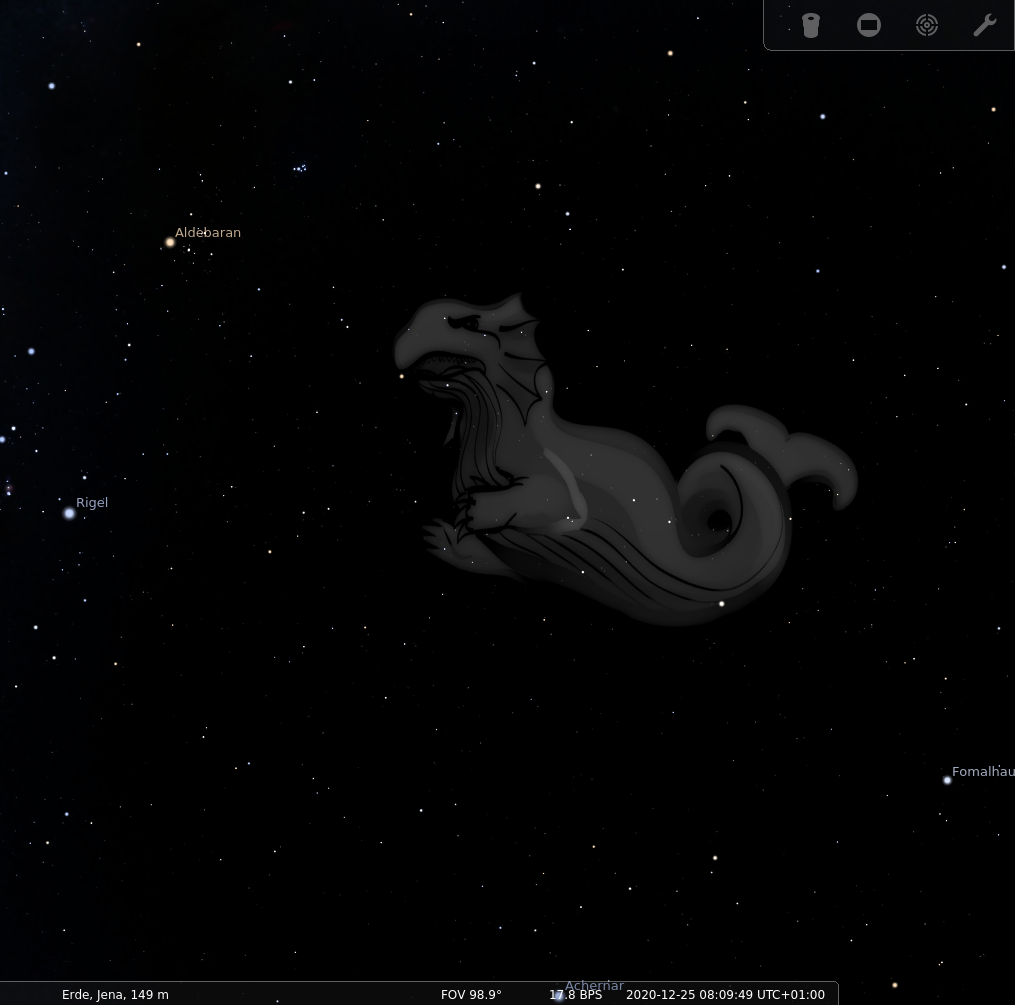
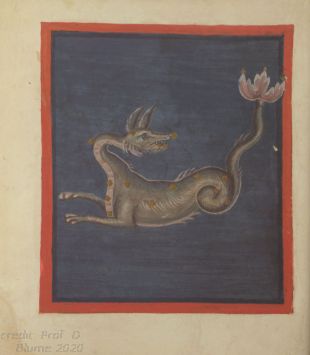
Depiction in Stellarium (by Fabien Chéreau, since 2000 CE)
depiction in the Leiden Aratea (9th century CE)
Early Modern Interpretation
Contemporary
As one of their first tasks in the 1920s, the newly founded International Astronomical Union (IAU) established constellation standards. The Belgian astronomer Eugène Delporte was assigned to the task to define borders of constellations parallel to lines of declination and right ascension. They were accepted by the General Assembly in 1928. The standardized names and abbreviations had already been accepted in 1922 and 1925.

